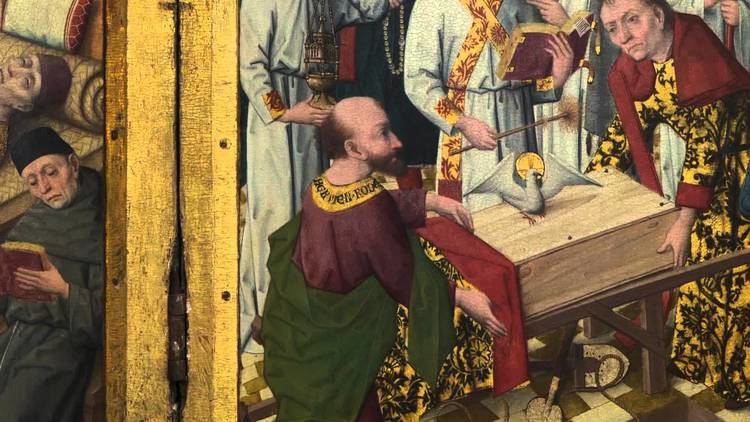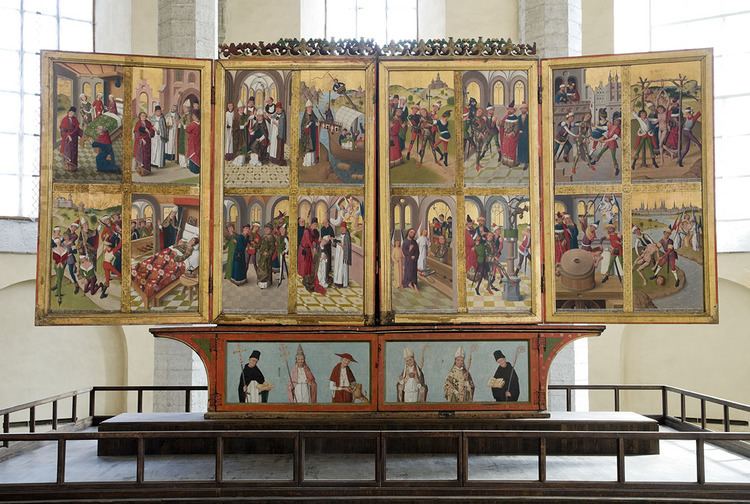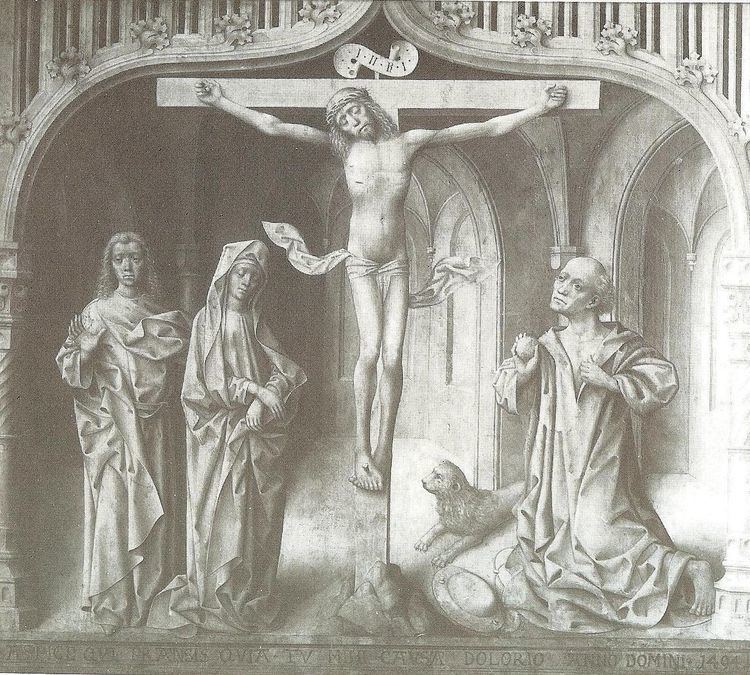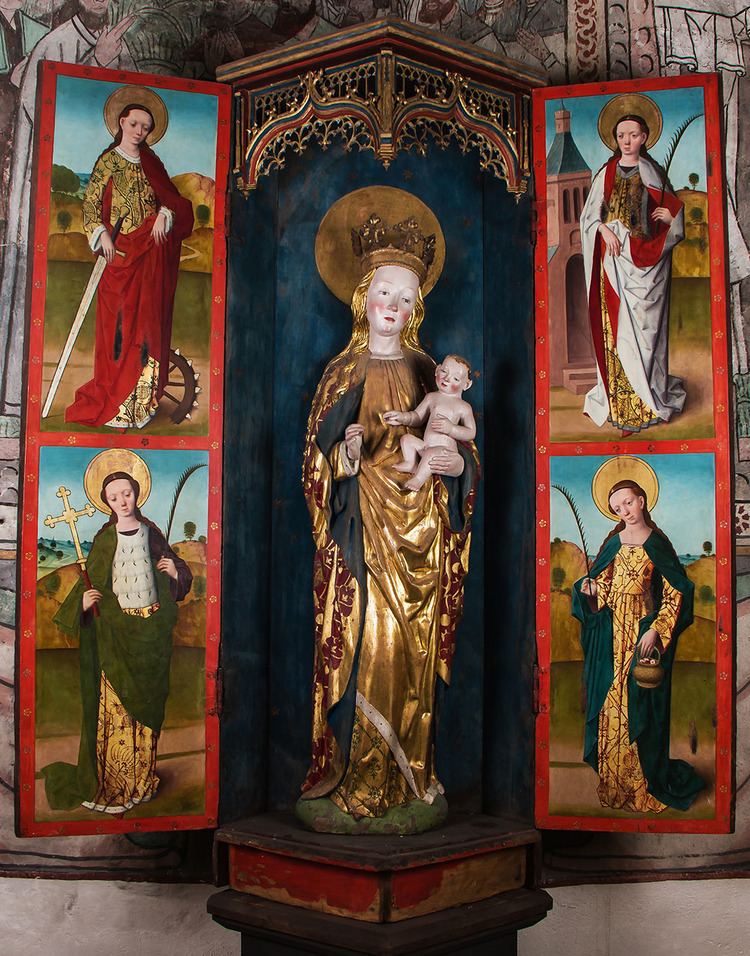Name Hermen Rode | ||
 | ||
Hermen rode kappaltar
Hermen Rode (fl. c. 1468 – c. 1504) was a German Gothic painter.
Contents
- Hermen rode kappaltar
- Kurisoo Lbecki meistri Hermen Rode tkoda Niguliste peaaltari retaabel Eesti kunsti DIGISILD
- Life and works
- References

Kurisoo – Lübecki meistri Hermen Rode töökoda. Niguliste peaaltari retaabel. Eesti kunsti DIGISILD
Life and works

Very little is known about Rode. He lived and worked in Lübeck, and from 1468 owned a house on Johannisstrasse street in the city, implying a certain degree of wealth and fame. A number of altarpieces have been attributed to him, although only one bears his signature: the altarpiece of St. Luke, executed 1484 for St. Catherine's church in Lübeck and today in St. Anne's Museum, Lübeck.

Several of the altarpieces attributed to Rode are today found in different parts of Sweden and seem to have been made specifically for a Swedish market, as they include depictions of national Swedish saints. Of these paintings, a few are today in the Swedish Museum of National Antiquities, and others in churches around the country, e.g. an altar dedicated to St. Mary in Sorunda church, and an altarpiece dedicated to St. Gertrude and St. Dorothy in Falsterbo church.

One of Rode's most imposing works of art is his mature High Altar of St. Nicholas' Church, Tallinn. It is currently on display at the Art Museum of Estonia. This painting includes the first known view of the skyline of Lübeck with its then eight church towers as background.

Of his art, The Grove Encyclopedia of Northern Renaissance Art notes that it displays:

[...] characteristic features such as his distinctive type of female head, with a prominent forehead, receding, softly rounded chin and strangely overcast, half-closed eyes. The bodies, however, are oddly boneless and retain the pointed, forward-stepping Late Gothic stance, and the colours are still dull and thinly painted. Later, influences from the Netherlands, especially from Bruges (Gerard David), became stronger, particularly in the palette, with bright, clear colour combinations resembling those of the Westphalian Master of Liesborn.

In his importance he stands equally next to his fellow countryman Bernt Notke. Together they were the most important exporters of art into the countries around the Baltic Sea.
